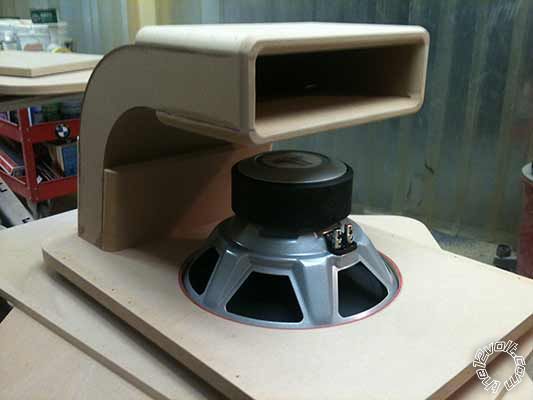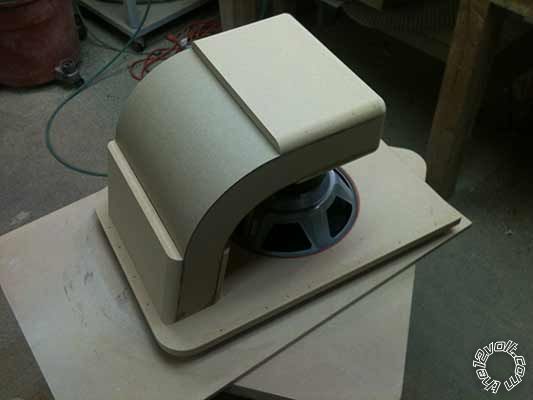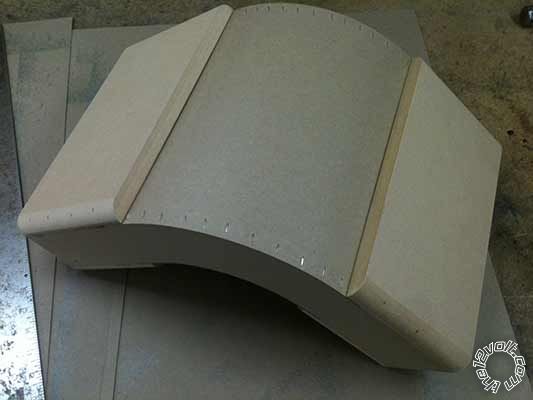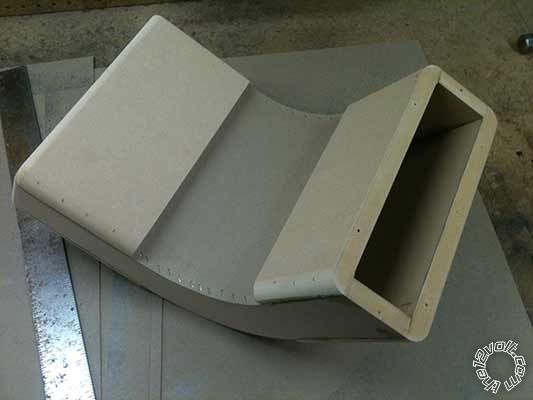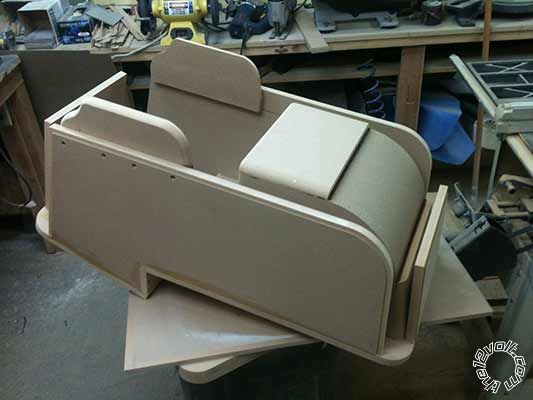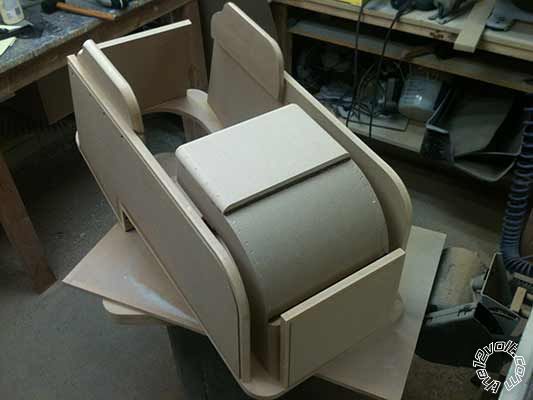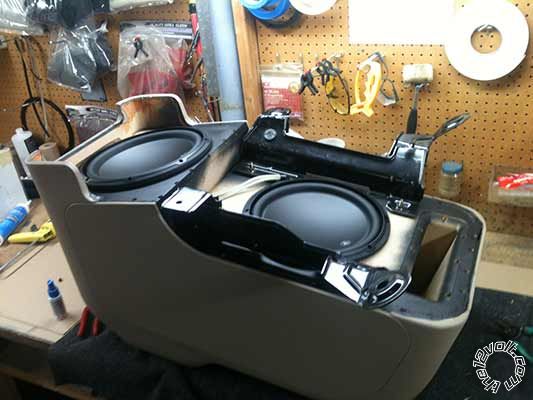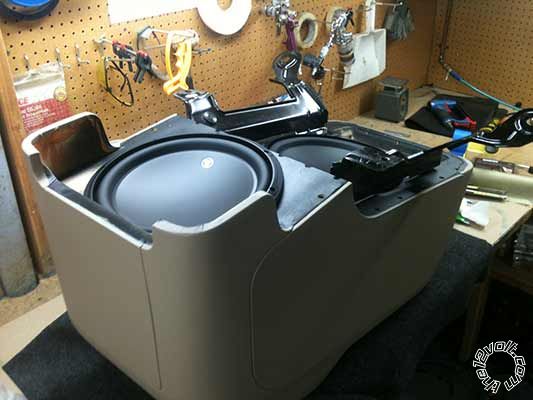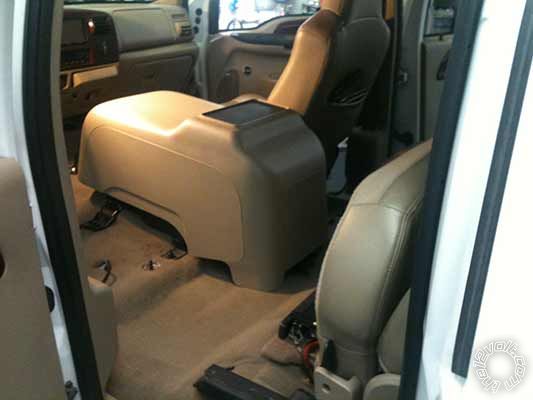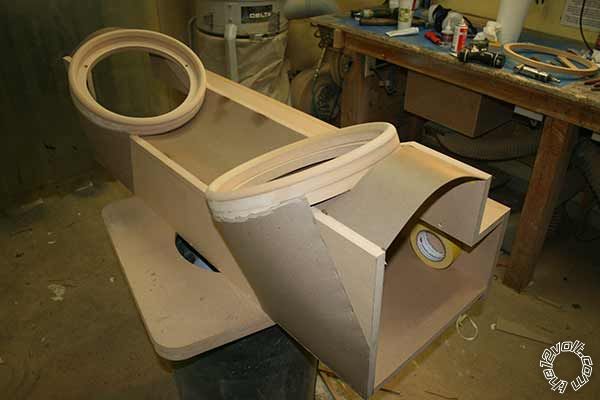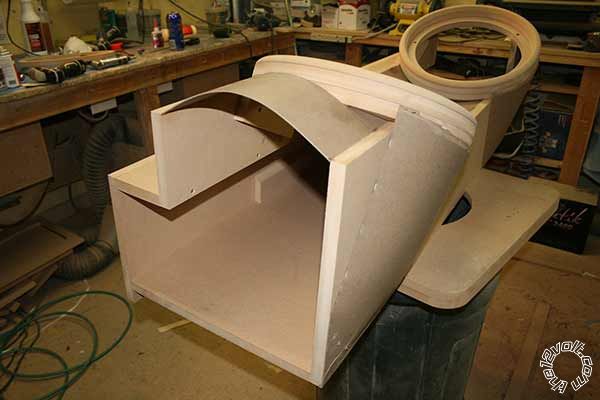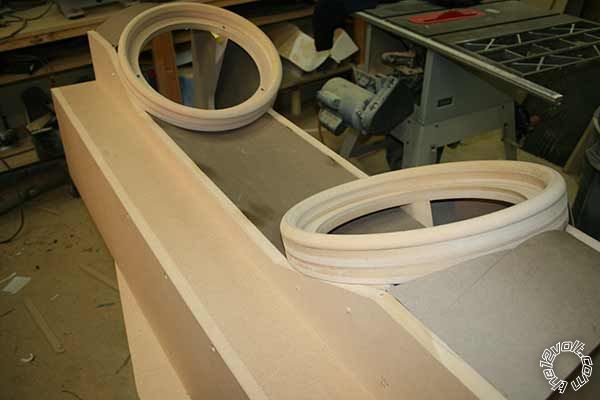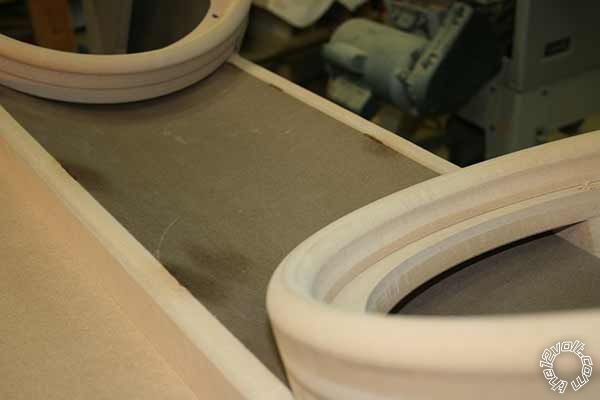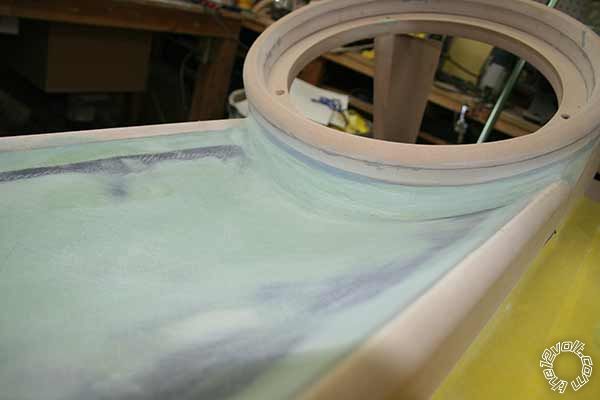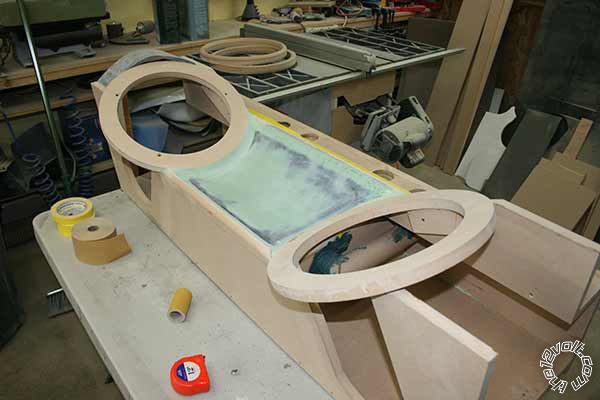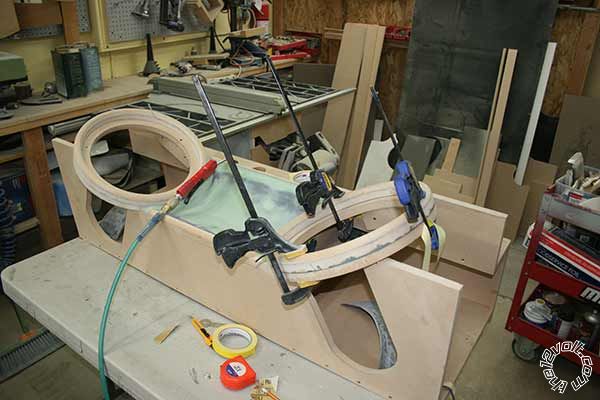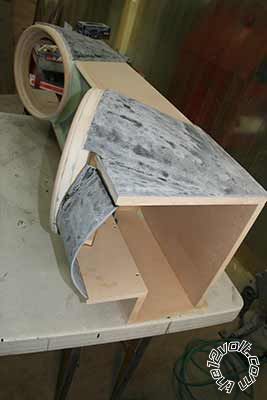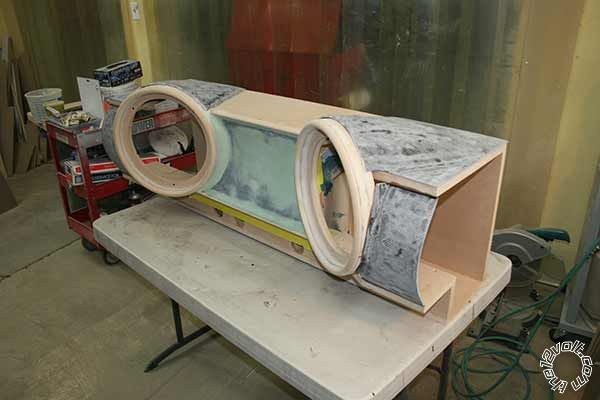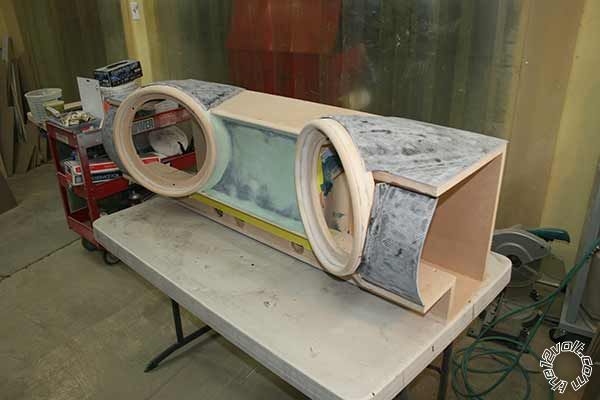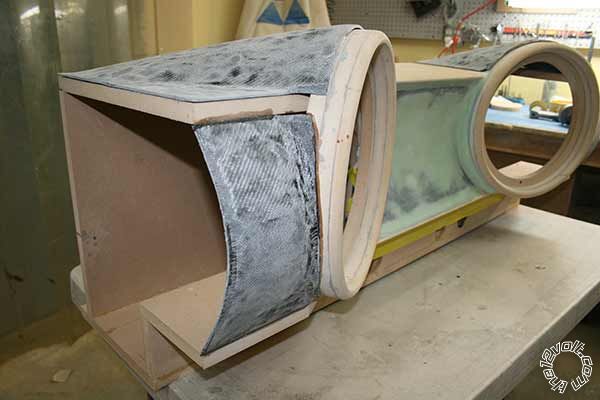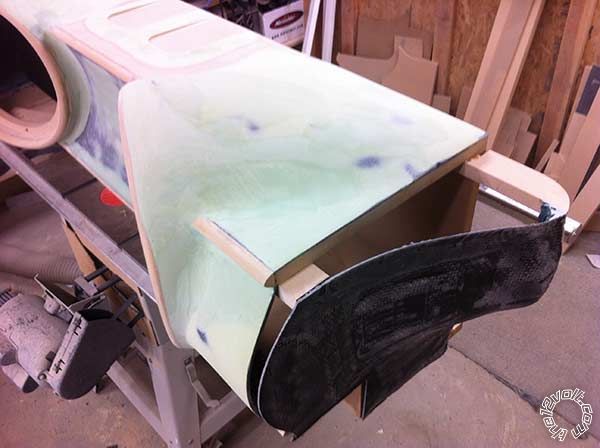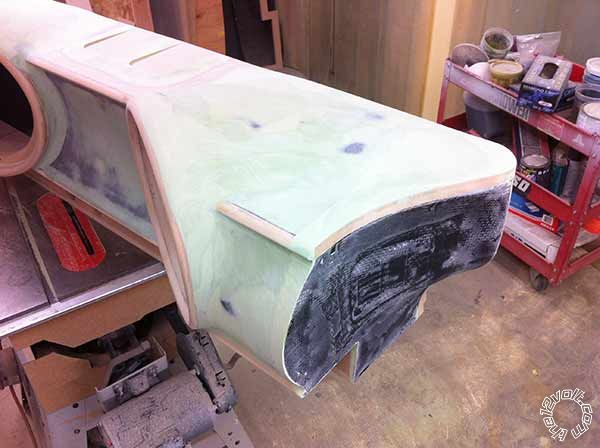New Glass Technique
Printed From: the12volt.com
Forum Name: Fiberglass, Fabrication, and Interiors
Forum Discription: Fiberglass Kick Panels, Subwoofer Enclosures, Plexiglas, Fabrics, Materials, Finishes, etc.
URL: https://www.the12volt.com/installbay/forum_posts.asp?tid=133884
Printed Date: December 01, 2025 at 6:40 PM
Topic: New Glass Technique
Posted By: speakermakers
Subject: New Glass Technique
Date Posted: March 18, 2013 at 2:43 AM
Replies:
Posted By: krush
Date Posted: March 21, 2013 at 11:34 AM
speakermakers do you build up the FG areas of the chipboard for the boxs where it is a wall of the box area? Only asking cause if the FG is thin then you get cracking and alot of flex from the pressure of sub.
Your work is very nice!!!!!! And from your pics, you have given me new ideas with the chipboard to make a AMP rack in my truck. Thx
by the way... what thickness is the chipboard and where can i get some?
-------------
The best tool in my work shop, is my BRAIN!!!!
Posted By: speakermakers
Date Posted: March 24, 2013 at 12:48 AM
When you ask for chip board at an upholstery shop or upholstery supply they will generally give you three options: waterproof board (black 3/16" treated cardboard that is used to make door panels on classic cars), and two thicknesses of true chip board (thick and thin. I keep both thicknesses of chip board in stock at all times but use the thinner of the two the most. I don't use the black water proof board at all. Chip board sells for $1.50 or less a sheet.
All areas that I use chip board on are then covered in aluminum foil, waxed, and then glassed over with "fatmat". I then remove the entire sandwich, peel off the chip board and aluminum, and bond the new fiberglass piece back in. When I am done the structure is strong enough to support a Mack truck. I am quite particular about how strong my glass work is. :)
You will notice the cross pattern on the surface of my glass work. This is because I use a well thought out series of glass grades, layers & application to achieve a high strength to weight ratio as well as dimensional stability. I am a big believer in over building everything, though my techniques allow my final glass areas to be much denser, stronger, and thinner than you will typically see.
Thanks for the complements!
Posted By: soundnsecurity
Date Posted: March 24, 2013 at 9:20 PM
definitely gives me some ideas too. ill have to see if they carry that stuff at the upholstery distributor i get my headliner and vinyl material from. im planning a glass box in my truck for my up-coming RE XXX12 and space is at a premium so ill be using a decent amount of glass.
i have a technique that you might be able to use to fill in some finer detail in your overall shapes with fiberglass using modeling clay as a surface that you can sculpt complex shapes and then glass over without having the clay stick to the glass. you can also take a physical object and press it into the clay to get a mold and then glass into the mold to make a fiberglass replica. this is good for logos and badges that are too small or complicated to make out of wood. you can also fill the mold with some sort of clear resin then paint it and light it up from underneath.
im far from an expert with fiberglass so i havent used this idea much at all but i dont see how it could fail for making small parts.
-------------
Posted By: speakermakers
Date Posted: March 29, 2013 at 8:47 PM
I'm interested. Post some pics please.
Posted By: soundnsecurity
Date Posted: April 06, 2013 at 6:05 PM
sorry i havent actually made anything with this technique yet but i will be using it in the next few weeks. im building a fiberglass box for a 12 inch RE XXX and im going to make the "XXX" logo out of pure resin and mold it into a panel and have it back-lit. it will be painted probably black but it will still glow when the lights are off. ive gone through it a thousand times in my head and i honestly dont see how anything can go wrong. ill definitely post pics and a tutorial when im done.
-------------
Posted By: tonanzith
Date Posted: April 13, 2013 at 1:49 PM
So you are glassing over the chipboard, using it as a form basically? then removing the chipboard and bonding back in the glass piece?
-------------
Gary Sather
Posted By: tonanzith
Date Posted: April 13, 2013 at 2:00 PM
Sorry. and what do you mean glassed over with fatmat. fatmat is a peel and stick sound deaden-er like dynamat, not fiberglass.
-------------
Gary Sather
Posted By: tonanzith
Date Posted: April 14, 2013 at 1:15 PM
Also for application where you need more fiberglass than wood for lighter weight etc a technique I've used is making a wood frame using 1x2 and mdf rings for the subs. I will wrap the frame in thick trunk liner thick carped. Non backed. So essentially all it is is a carpeted frame. Then I use resin mixed with bondo for extra strength and glass the carpet. Which gives me one solig glassed box that is extremely strong and light for the size but still fairly heavy considering. Over all thickness of the glass ends up being about 1/3" thick. And extra strong. I ususlly dynamat the inside and it helps it sound acoustically more like a wood box with all the strngth but less weight and is a fast process. 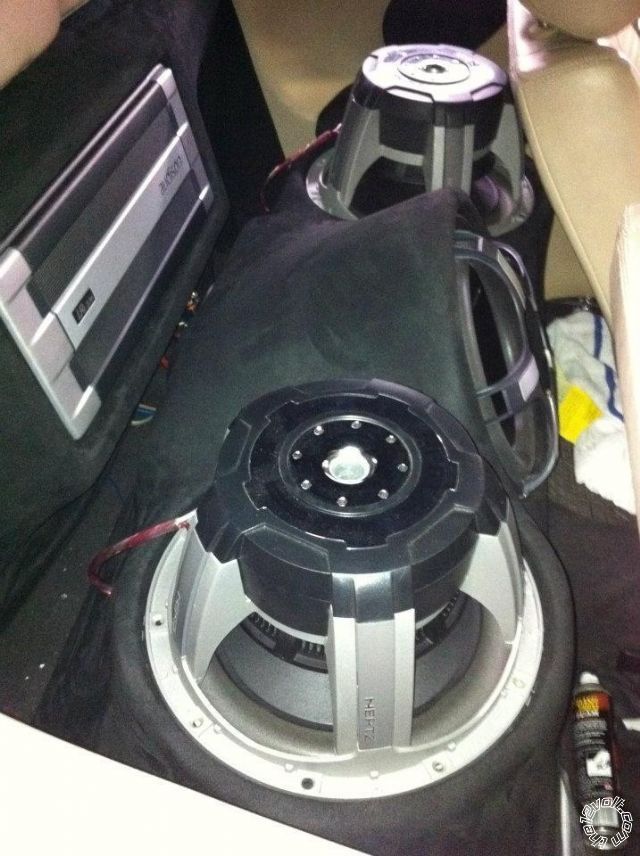
This was one of those boxes that ended wrapped in suede. I have photos of the process I can also post. ------------- Gary Sather
Posted By: soundnsecurity
Date Posted: April 15, 2013 at 6:29 PM
the glassed carpet box is strong but a properly layered fiberglass box will be stronger because of the fabric direction. if you alternate the directions through each layer you will end up with something extremely strong. the carpet will have air in it too because theres no way to really push the air out, all you can do is saturate it as best as you can but air will still be there in some spots, its just too thick. nothing against you personally, that box and amp rack does look pretty nice but its probably not as strong as you think. did you cover it with suede?
-------------
Posted By: tonanzith
Date Posted: April 15, 2013 at 6:36 PM
Covered it in suede. Plus strength is tried and tested. This box has been going tough as a demo car for 2 years now. 0 issues in strength ir performance.
-------------
Gary Sather
Posted By: soundnsecurity
Date Posted: April 15, 2013 at 7:03 PM
yea im not saying it isnt strong enough for some installs, my point was that actual fiberglass is still stonger. hell i made some pods a while back for some tweeters out of a thin layer of fleece and soaked it in resin and you can probably hit it with a sledge hammer, i was really surprised at how strong it was after just one layer. plus the fact that your box has nothing but curves also has a lot to do with why it holds up nicely, if it wasnt so curved it would probably flex a little.
honestly if it flexes now you wouldnt even know it because its covered in suede, if it was painted, that would be the true test of whether or not it flexes.
-------------
Posted By: tonanzith
Date Posted: April 15, 2013 at 7:10 PM
Well I was just throwing this process out there. It IS strong. And it ran painted for a few months before getting wrapped in suede. No flexing. Glassed clean through over 1/3" thick. It worgs great when you need curves and a slightly faster process.
-------------
Gary Sather
Posted By: soundnsecurity
Date Posted: April 15, 2013 at 8:58 PM
how hard is it usually to sand something like that? it mush be pretty rough when its first cured.
-------------
Posted By: tonanzith
Date Posted: April 15, 2013 at 9:11 PM
No harder than sanding any other fg application.
-------------
Gary Sather
Posted By: krush
Date Posted: April 24, 2013 at 10:42 AM
speakermakers do you remove the hardboard after the FGing or just leave it? I would assume that the FG just bonds to it like wood?
-------------
The best tool in my work shop, is my BRAIN!!!!
Posted By: speakermakers
Date Posted: May 11, 2013 at 12:28 AM
I guess there have been a few points of confusion on my original post.
How this technique saves you time sanding
When I refer to Fatmat I am not refering to the sound deadener product. Fatmat is a term used in large production fiberglass industries like boat building and hot tubs. Fatmat is a technique where you pre-layer modified twill with random chop mat using solvent based spray glue. This allows you to apply resin to the fiberglass before putting it on your project. Doing it this way also allows you to roll out any excess resin giving you the perfect resin to fiberglass ratio for an ultra strong and light wight product.
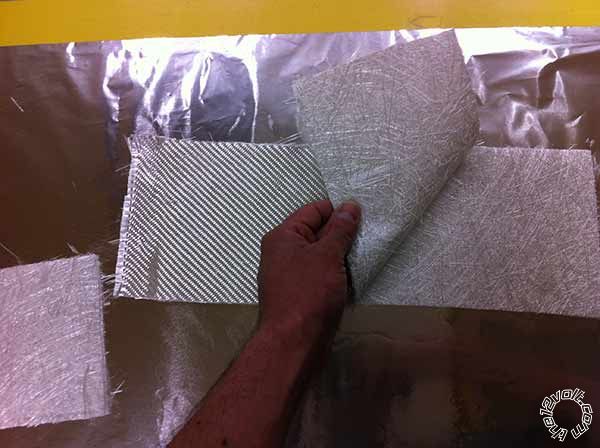 Yes I remove the chip board.
Yes I remove the chip board. I tape and wax the chip board before I lay glass on it. I then bond the glass back onto my project. My projects are much lighter weight and much stronger than you will typically find in the car audio world.
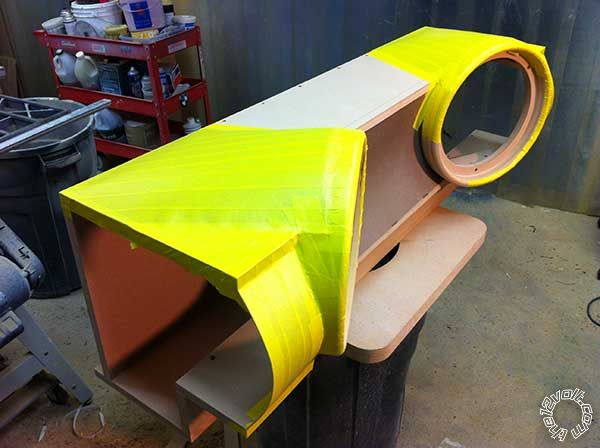 This technique saves you time sanding.
This technique saves you time sanding. Because the glass is preformed and rolled smooth. The final layup requires much much less body filler and consequently sanding. As an added benefit the project has dimensional stability. It won't warp in the sun and there is not much filler on it so it won't shrink and show sand lines through the paint work a couple of months down the road.
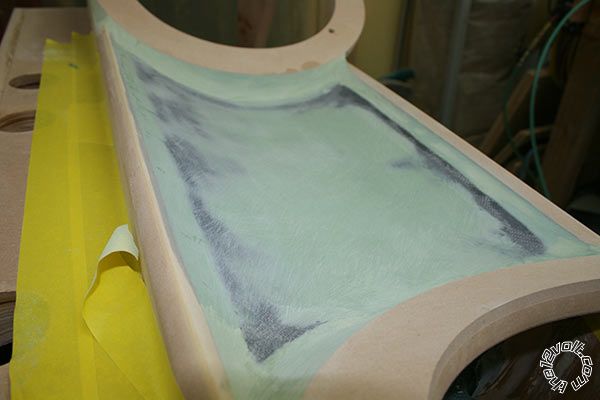
Posted By: speakermakers
Date Posted: May 11, 2013 at 12:28 AM
|
